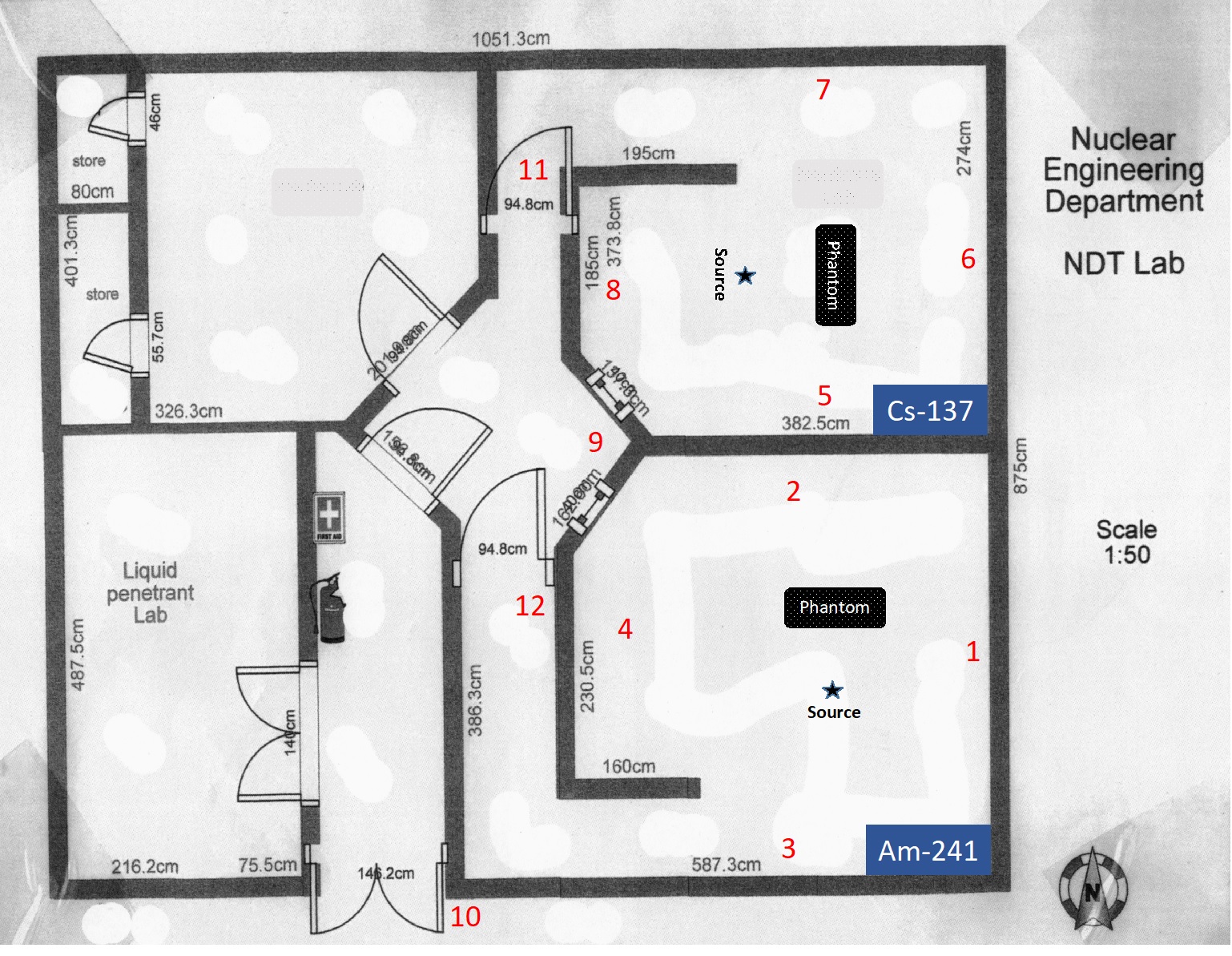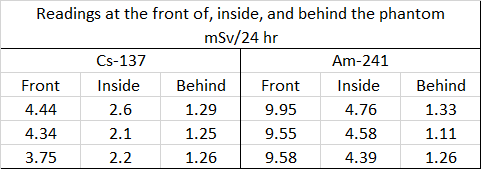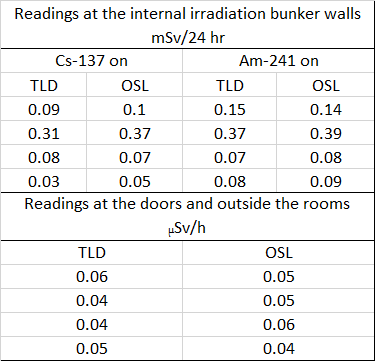
| Theme: Radiation Protection & Safety | |||
 |
||||||
| Construction of Irradiation Bunker at King Abdulaziz University for Training Purpose by Using High and Low Energy Gamma Sources |
 |
|||||
|
||||||
One of the facilities that a medical physicist needs for irradiation and instrument calibration is an irradiation bunker. Irradiation bunkers can be used for a wide range of applications such as food irradiation, medical equipment sterilization, and other useful and essential applications. These bunkers usually have a Co-60 source with very high activity (up to 1 MCi), reaching a dose from 0.1 kGy for food irradiation to 10 kGy for medical equipment sterilization in a short period. The Nuclear Engineering Department at King Abdulaziz University (KAU) is willing to construct an irradiation bunker for students and technicians training purposes.
 The design of the bunker consists of two rooms with a maze entrance. The rooms are built with 70 centimeter-thickness of concrete walls, while a leaded glass window is placed between the rooms and the control panel. For additional safety and security, a closed-circuit television (CCTV) system is set to monitor the irradiation process. In the middle of the first room (5.8x4.8m2), a low gamma-ray energy source Am-241 (59.6 keV energy) with 0.94 Ci activity was placed, while in the other room (5.8x4m2) a Cs-137 source (662 keV energy) with 46.78 mCi activity was also placed in the middle. Optically Stimulated Luminescence dosimeters (OSLD) and Thermoluminescent dosimeters (TLD) were used for dose measurements since they are sensitive to x-rays, gamma-rays and beta particles. The advantage of using OSLD is that it has high sensitivity and accuracy for measurements across a wide dose range. A solid-water tissue-equivalent phantom (15x20x19.5 cm3) was used to measure the absorbed dose in the phantom with a source-to-surface distance of 100 cm. OSL nanodots dosimeters were placed inside the phantom to measure the in vivo dose. Moreover, TLD and OSL cards were distributed inside and outside of the irradiation bunker walls to measure the radiation dose, making sure the readings are within the International Commission on Radiological Protection (ICRP) limits. Additionally, an ion chamber was used to confirm the readings generated from the OSL.
The design of the bunker consists of two rooms with a maze entrance. The rooms are built with 70 centimeter-thickness of concrete walls, while a leaded glass window is placed between the rooms and the control panel. For additional safety and security, a closed-circuit television (CCTV) system is set to monitor the irradiation process. In the middle of the first room (5.8x4.8m2), a low gamma-ray energy source Am-241 (59.6 keV energy) with 0.94 Ci activity was placed, while in the other room (5.8x4m2) a Cs-137 source (662 keV energy) with 46.78 mCi activity was also placed in the middle. Optically Stimulated Luminescence dosimeters (OSLD) and Thermoluminescent dosimeters (TLD) were used for dose measurements since they are sensitive to x-rays, gamma-rays and beta particles. The advantage of using OSLD is that it has high sensitivity and accuracy for measurements across a wide dose range. A solid-water tissue-equivalent phantom (15x20x19.5 cm3) was used to measure the absorbed dose in the phantom with a source-to-surface distance of 100 cm. OSL nanodots dosimeters were placed inside the phantom to measure the in vivo dose. Moreover, TLD and OSL cards were distributed inside and outside of the irradiation bunker walls to measure the radiation dose, making sure the readings are within the International Commission on Radiological Protection (ICRP) limits. Additionally, an ion chamber was used to confirm the readings generated from the OSL.


Readings of OSLDs and TLDs distributed outside the bunker rooms for 24 hours duration. Moreover, readings on the walls inside the irradiation rooms (for Am 241 and Cs 137 rooms) are very low and that implies that the radiation dose on the outer side of the wall (70 cm thickness of concrete) will never exceed the normal background dose. Thus, the radiation safety outside the bunker and in the control panel room is assured.
IAEA, “Radiation Safety of Gamma , Electron and X Ray Irradiation Facilities,” Iaea, vol. IAEA SAFET, no. 107, pp. 1–92, 2010.
N. Grecz, E. W. Hahn, and W. E. Jouris, “Medical gamma processing facility in Riyadh, Saudi Arabia, and radiation applications,” Int. J. Appl. Radiat. Isot., vol. 36, no. 9, pp. 741–742, 1985.

 Send Email
Send Email